By Lawi Weng / The Irrawaddy | September 26, 2016
It looks, smells, and feels like a war zone. The highway is lined with military vehicles and 120mm artillery guns point up into the mountains where rebel troops from a Democratic Karen Benevolent Army (DKBA) splinter group hide. Locals have fled their homes, which are now occupied by soldiers of the Border Guard Force (BGF), the Burma Army-backed militia.
We travel with the BGF troops through the abandoned villages to their front line. A fellow reporter said she could “smell death” moments before a soldier points to the burial site of 40 soldiers killed in recent clashes. Most were Burma Army soldiers, he said. The total number of casualties in this latest conflict is unknown.
Fighting between a DKBA splinter group and the BGF began on Sept. 2 and subsided by Sept. 19 in the Mae Tha Waw area of Hlaingbwe Township, Karen State. With the support of the Burma Army, the BGF now control the highway between Mae Tha Waw and Myaing Gyi Ngu—a two-hour drive by car. Mae Tha Waw is near the border with Thailand and home to small-scale cross border trade.
During our time at the front line we daren’t leave our cars or stray off the road as the area is littered with landmines. Because of this, and the splinter group’s mastery of guerilla tactics, the BGF soldiers we met told us they do not follow assailants into the jungle.
They may have claimed victory, but in reality BGF troops only occupy the highway, and no one knows if and when the DKBA splinter group troops will launch another offensive.
Despite the obvious death toll and this limited victory, soldiers of the BGF greeted us with warm smiles. Maj. Naing Maung Zaw, assistant to the head of BGF Col. Saw Chit Thu, confidently told visiting reporters that this was the “last war” for the Karen ethnic group.
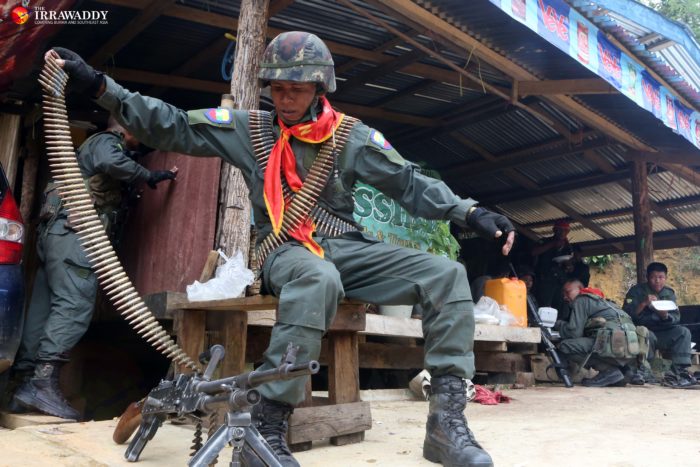
A Border Guard Force soldier loads a machine gun on the front line of clashes theMae Tha Waw area of Hlaingbwe Township, Karen State (Photo: Myo Min Soe / The Irrawaddy)
The recent fighting in Karen State, also known as Kayin State, began with the death of the DKBA splinter group leader Maj. Na Ma Kyar at the hands of an elephant mahout he was holding hostage. The group alleged Burma Army involvement as Maj. Na Ma Kyar was on their wanted list. The conflict soon escalated and the faction, now led by Maj. Saw San Aung, released a statement on Sept. 9 saying that it would be opening more frontline battles.
In the eyes of the BGF, this was a big mistake. “Saw San Aung is a trouble maker. Wherever he lives, he creates fighting.” Maj Naing Maung Zaw told The Irrawaddy on the front line. “Now, he has to run away,” the BGF soldier added. Leaders of the BGF feel that Maj. Saw San Aung and fellow splinter group leader Brig-Gen Kyaw Thet should have stayed quiet and enjoyed the “benefits” of their control areas.
In a video posted to his own Facebook, Col. Saw San Aung said he desired peace and wanted to join the 21st Century Panglong Union Peace Conference convened by Daw Aung San Suu Kyi at the end of August. But the central government did not invite the group to the conference. “We can only act as insurgents if you don’t invite us to join the peace process,” he said in the footage.
Another BGF colonel we met on the front line, Col. Myint Wai, said that “the DKBA splinter group came to attack us first and we decided to fight back.” The BGF launched their own military operation on Sept. 13. It took three days to capture mountain bases in Ba Gwe Khong where he said, “we joined forces with the Tatmadaw
“We seized Yeik Khar Khong and Mee Htwe Khong on Sept. 19. Two of their men were killed at Yeik Khar Khong.”
For now, it seems, the BGF and Burma Army continue to control the Mae Tha Waw area. They might develop the town of Mae Tha Waw, increase border trade in the area and build a new road to the state capital Hpa-an. The Hatgyi Dam on the Salween River could be another development project pursued if the Mae Tha Waw area remains at peace.
The DKBA splinter group may now face difficulties holding bases in the area. Even the political group the Karen National Union (KNU) had little control of the Mae Tha Waw area, and has even less now. An armed group of the KNU, the Karen National Defense Organization Brigade 5, led by Maj-Gen Ner Dah Mya, also has a big base nearby and will also be feeling pressure from its new neighbors.
The BGF is well armed-with M16 rifles, superior to the G3 used by Burma Army. The soldiers look more professional, sporting matching uniforms (unlike the Burma Army in the region), long army knives, and dark sunglasses. They look like commando soldiers.
The BGF have a negative reputation in Karen state due to their close ties to Burma Army generals; critics claim they are puppets of the Burma Army. Many are former DKBA members who agreed to serve the BGF, tempted by business opportunities in the Thai border town of Myawaddy, where BGF leaders often flaunt wealth with gold rings and amulets. The BGF have enough power and influence in this area that even the Burma Army dare not oppose it.
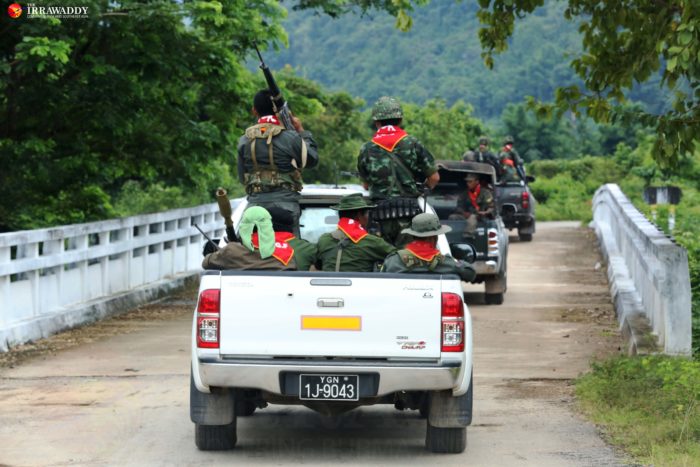
Soldiers from the Burma Army-backed militia the Border Guard Force travel along the highway between Mae Tha Waw and Myaing Gyi Ngu. (Photo: Myo Min Soe / The Irrawaddy)
In a calculated PR move, our visit to the front allowed the BGF to show how they administer the Mae Tha Waw area. They donated food to Buddhist monks and showed us a pagoda they were rebuilding after damage from firefights. They gave donations to the refugee camp at Myaing Gyi Ngu monastery.
Karen community leaders have criticized the BGF for fighting other ethnic Karen rather than together pressing the government for greater rights. In fact the BGF includes other ethnicities, including Burmese former civil servants. Maj. Naing Maung Zaw is ethnic Mon. It seems the chief concern of BGF members is personal benefit; they are very different from members of Burma’s armed ethnic groups fighting for their rights.
The two-week conflict has forced nearly 4,000 civilians to flee their homes and seek shelter elsewhere in the area. Many of the displaced are children and women. Despite efforts by the Burma Army, the majority have refused to go home. Community leaders have been powerless to stem the violence. U Thuzana, an influential monk and co-founder of the original DKBA, is hosting many refugees at his monastery in Myaing Gyi Ngu. His calls for peace among the armed groups have fallen on deaf ears.
On the front line, Col. Myant Wai of the BGF was asked how he felt about ethnic Karen fighting each other. “For us, we wanted to have peace. But it’s hard to know what the DKBA want,” he said.
“The DKBA are our brotherhood,” he added awkwardly. “We used to eat together, travel together, and live together. If we can all live in peace then Karen people could travel easily.”
Maj. Naing Maung Zaw also said he regrets the disturbance in the peace, but for him there was only one way to counter DKBA splinter group aggression. “We have to think of our family. If we make the right decision, our families will prosper and live with honor,” he said.
This article originally appeared on The Irrawaddy on September 26, 2016

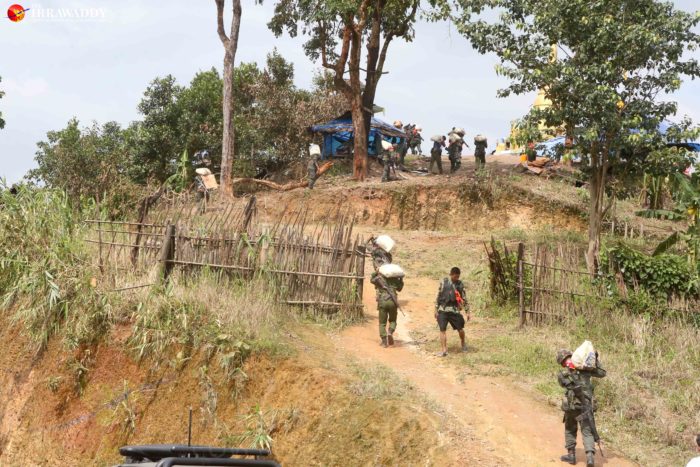

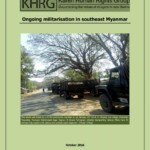
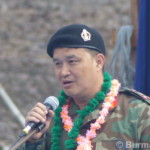

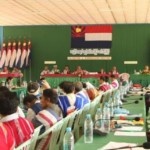
![‘The Burma Army Killed Him [Saw O Moo] – At Least the Government or the Army Should Commit to Not Do This Again’: Paul Sein Twa, Executive Director of KESAN](https://www.burmalink.org/wp-content/uploads/2018/05/Saw-O-Moo-commemoration-Paul-Sein-Twa-speaking-2-150x150.jpg)